Met 'The Beast' door Noord-Amerika
Deserted places
by Isabelle Demaeght, March 14th, 2022
After five days in a busy RV (mobile home) park, we are ready for a little "solitude".
We visit the archaeological site of Mitla during the afternoon. Mitla is different from the previous sites because this city was built by the Zapotecs, unlike the Mayan ruins we viewed earlier. The foundations and some of the material from these ruins were used by the Spanish to build a church. After visiting the site, we sit on a bench in front of that church and watch a bride get a lot of attention before she leaves on horseback and accompanied by a small brass band.
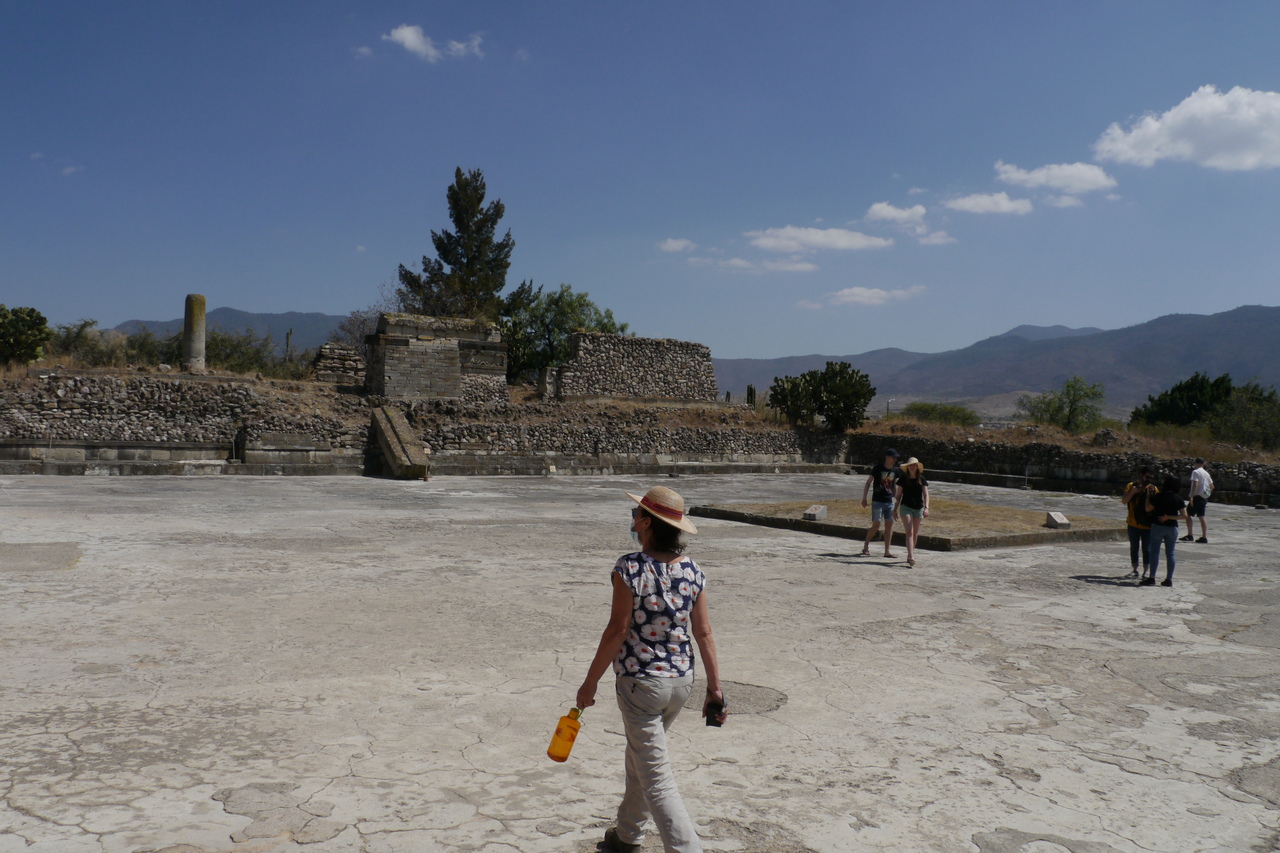
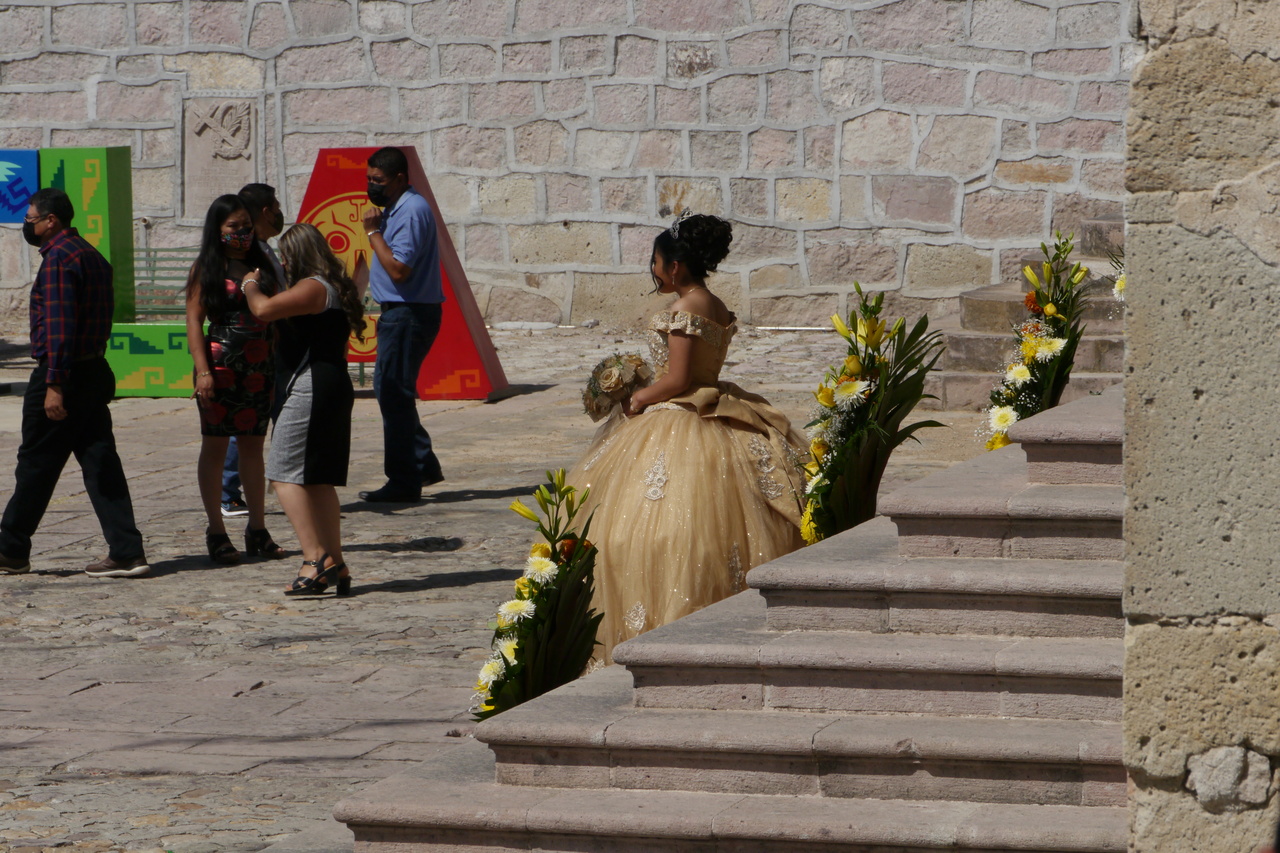
A steep, winding and unpaved mountain road takes us to "Hierva el Agua". We stop a few kilometers before the entrance to cook and spend the night in a semi hidden place. We are the first to arrive around 9:00 am. "Hierva el Agua" means water that boils. The water comes from a spring at the top of the mountain and does not boil, but is about 25 degrees. It contains so much calcium that it attaches itself to the rocks and forms a distinct relief: petrified waterfalls. Two pools of water have formed and I am the king to be the first and all alone to enjoy them today. The view is magnificent. We take another walk to see the falls from a different perspective and when we leave after an hour and a half there are already numerous (Instagram) tourists.
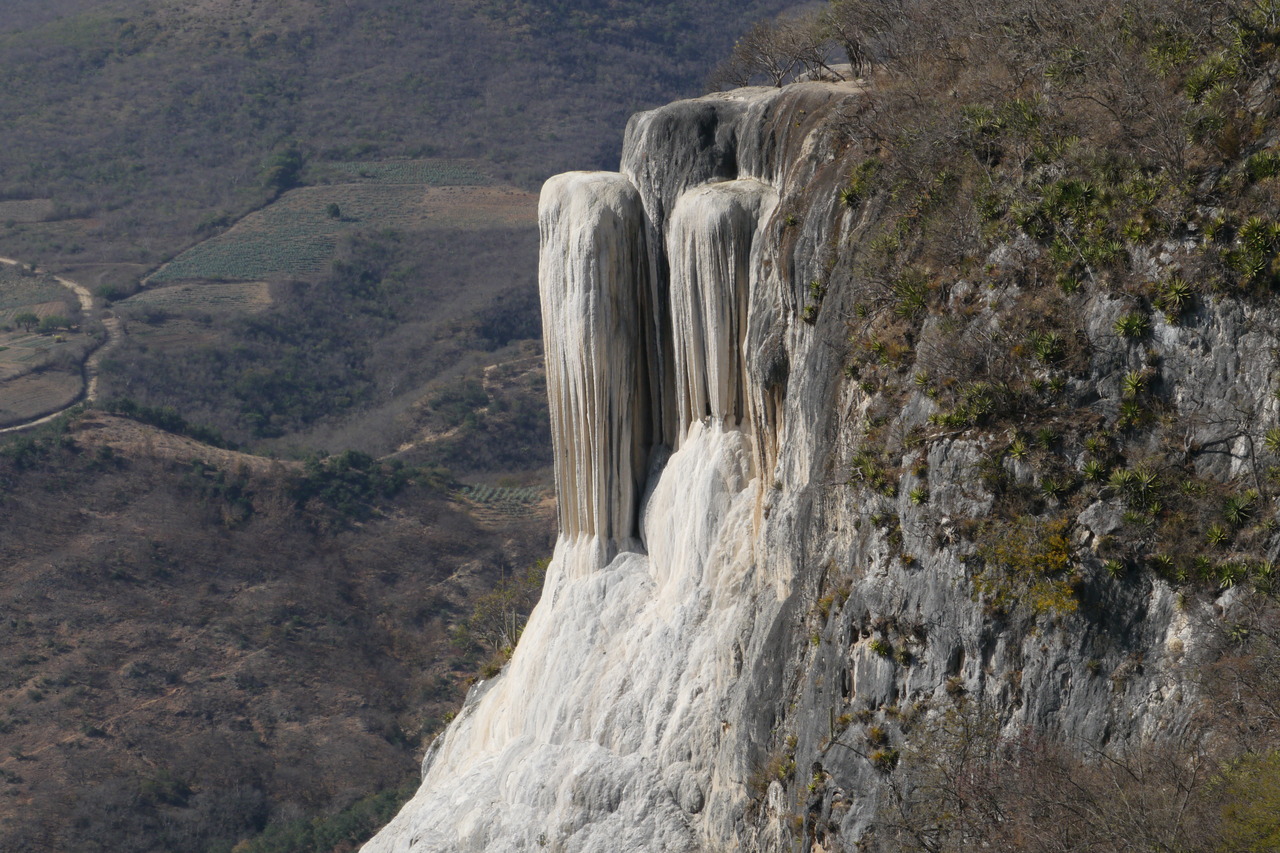
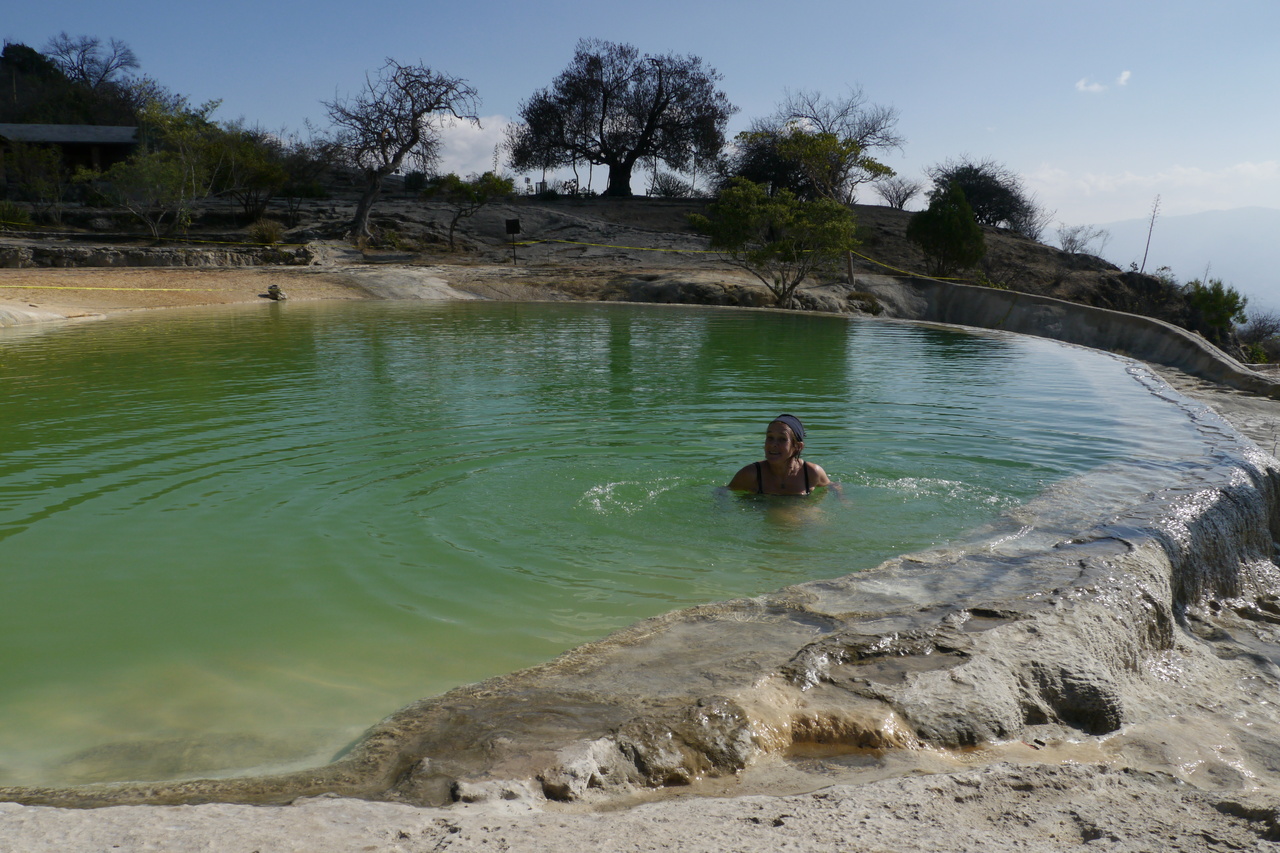
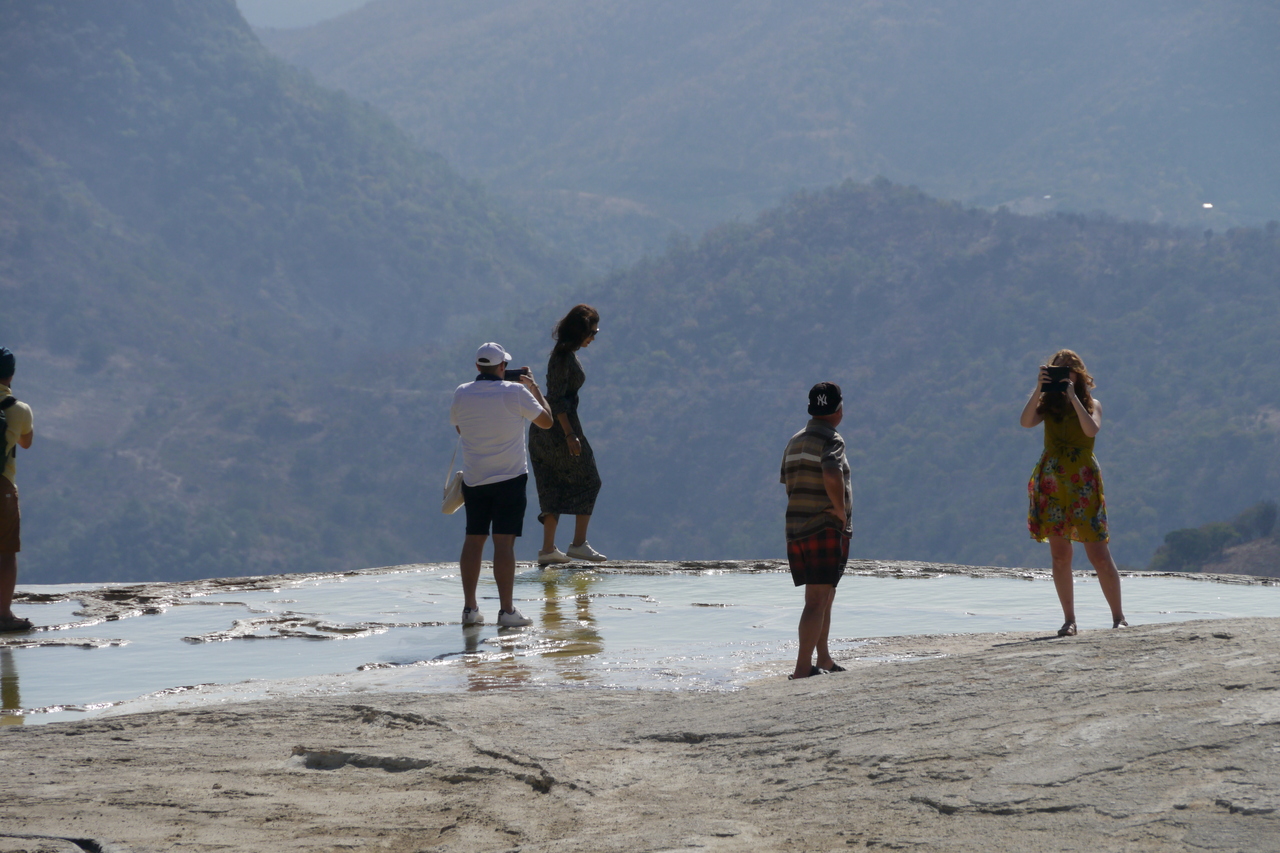
The road back to the coast is long so we make a stop in San Pedro de Pacifico. In our app, this place was indicated as a great campground but in the end it turned out to be someone's unpaved parking lot with four other overlanders. The site has no comfort whatsoever, there is crap everywhere, the sanitary facilities are not much and we are very close to each other so we decide to stay for just one night. We do enjoy a beautiful sunset. In the evening we drink beer 'in town' with mechanical engineer John, a Canadian motorcyclist. Adriaan and John couldn't stop talking (about engines). For a moment it looked like they were going to adjust the valves of The Beast the next day, but we have to get on with it.
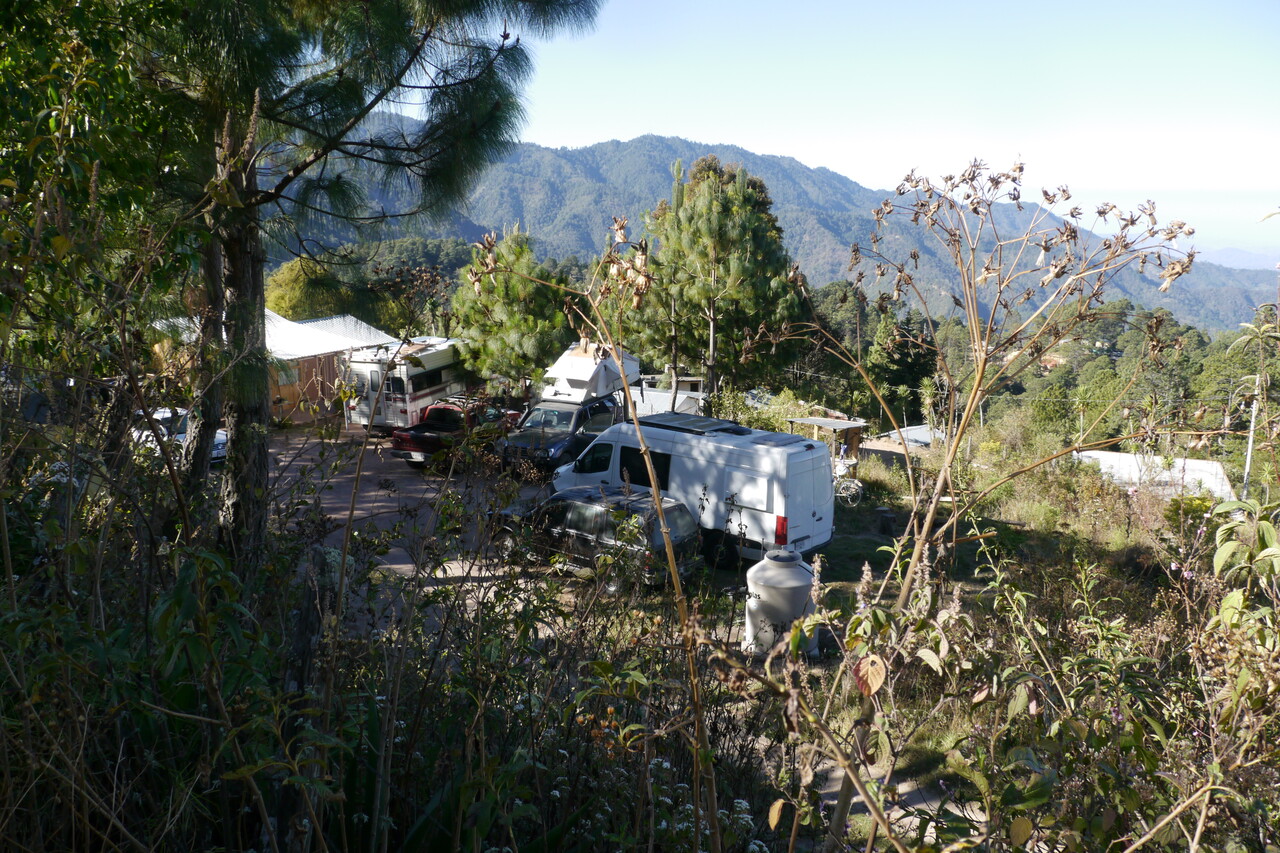
We arrive at the coast (San Augustin) at the campsite of the British John. He has built a beautiful place for himself which also provides for his own energy. During our breakfast, Elly and Jos pass by, traveling Belgians from Essen who are temporarily taking care of another campground for a Dutch acquaintance. During our walk along the beach we pass that camping site. Together with Jos and Elly and a British couple we spend a relaxing Sunday afternoon at the restaurant.
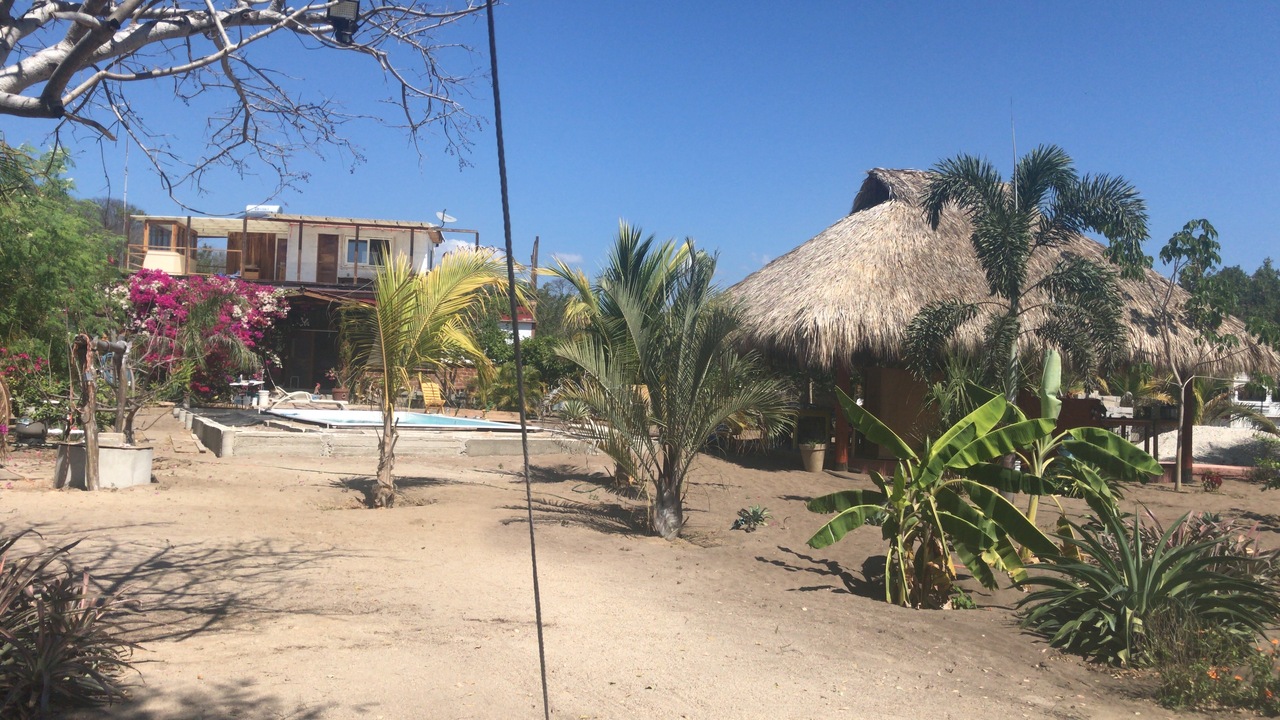
For the next few days, we find deserted spots on the beach on the coast each time. We live a little isolated and carefree existence for a week, enjoying the sun and the sea. On this coast, turtles dig in their eggs at night. They leave clear tracks and poachers know this. They drive quads with baskets and shovels on them along the waterline. After the eggs hatch (due to the heat of the sun) the newborns have to find their way to the sea, which often fails. We met young German volunteers who work for an organization that digs out the eggs, lets them hatch in a protected area, and then takes little ones to the sea. We planned to go on a tortoise tour at night.... We never got further than a dead turtle on the beach that had been eaten by vultures.
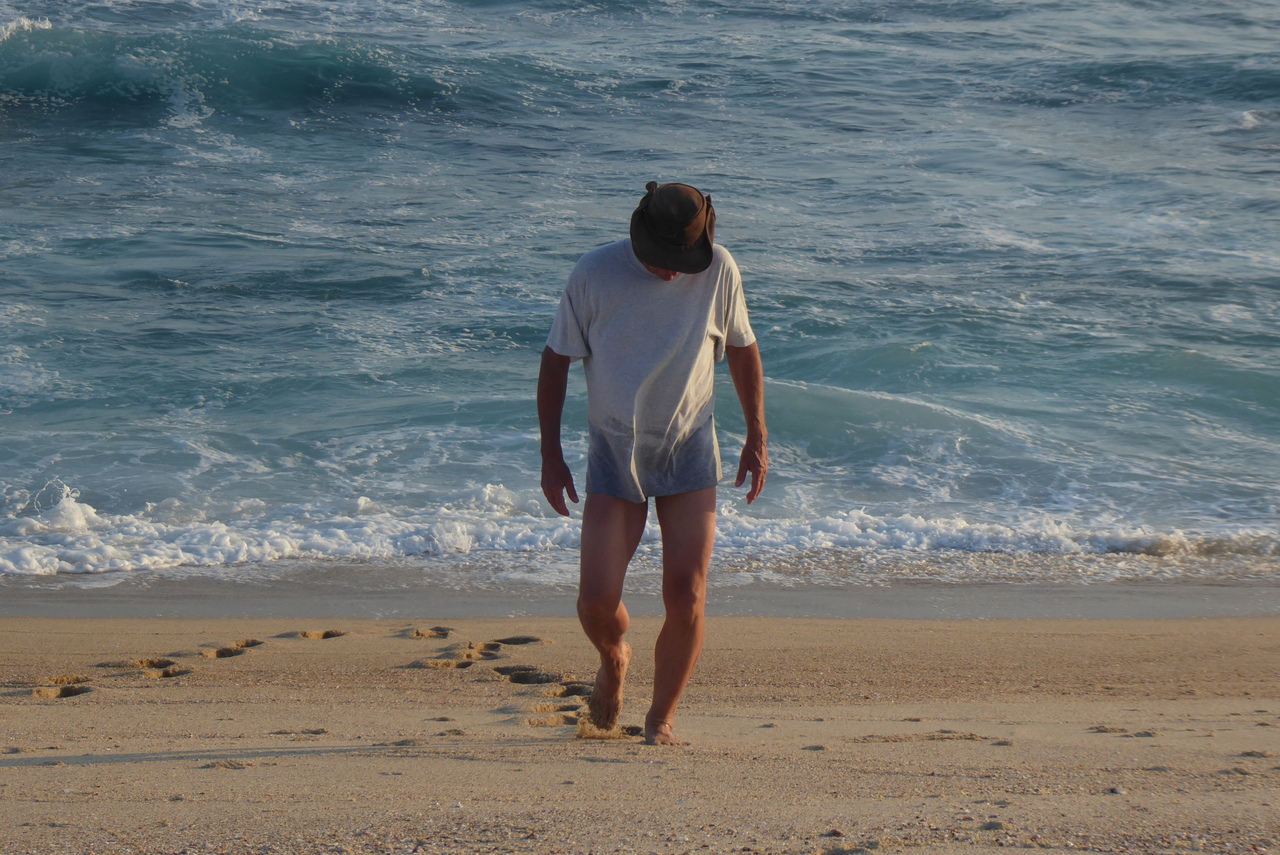
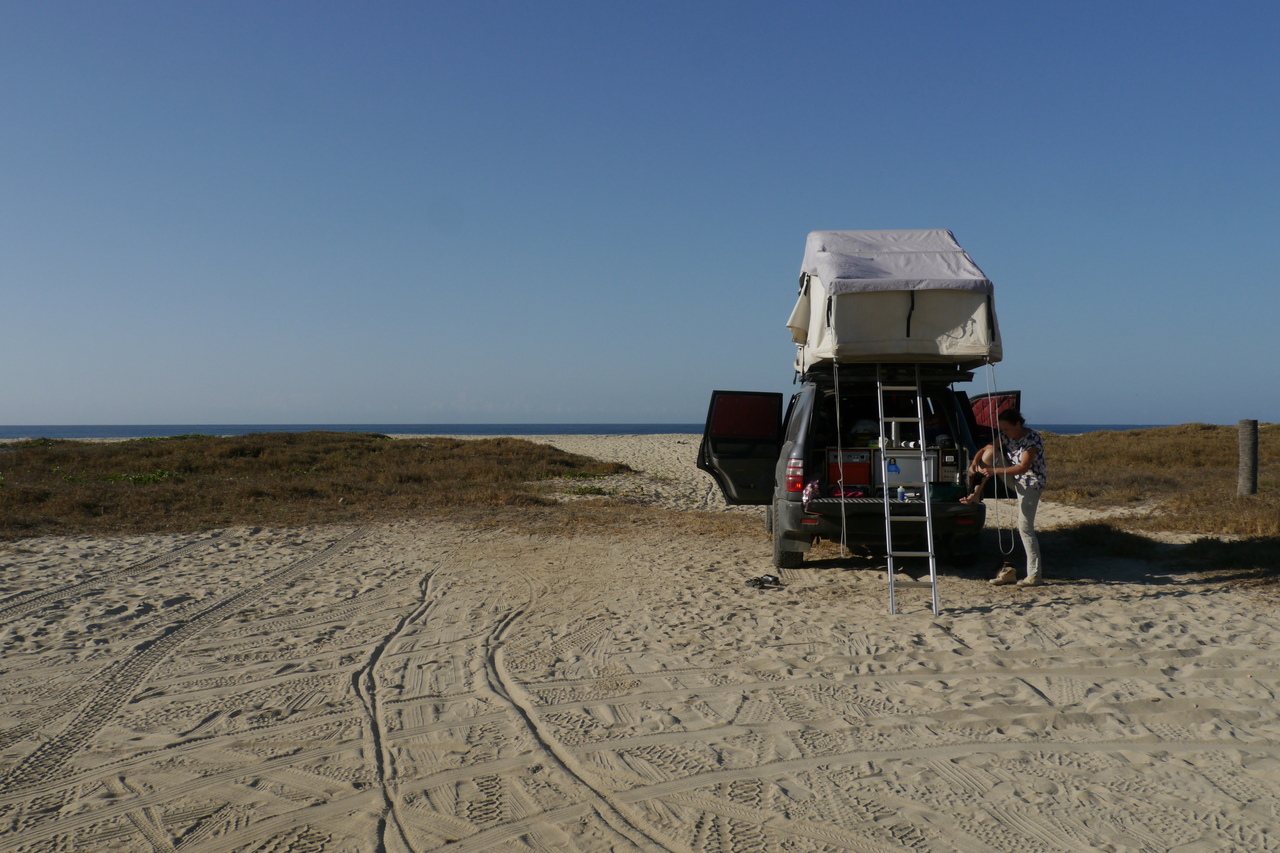
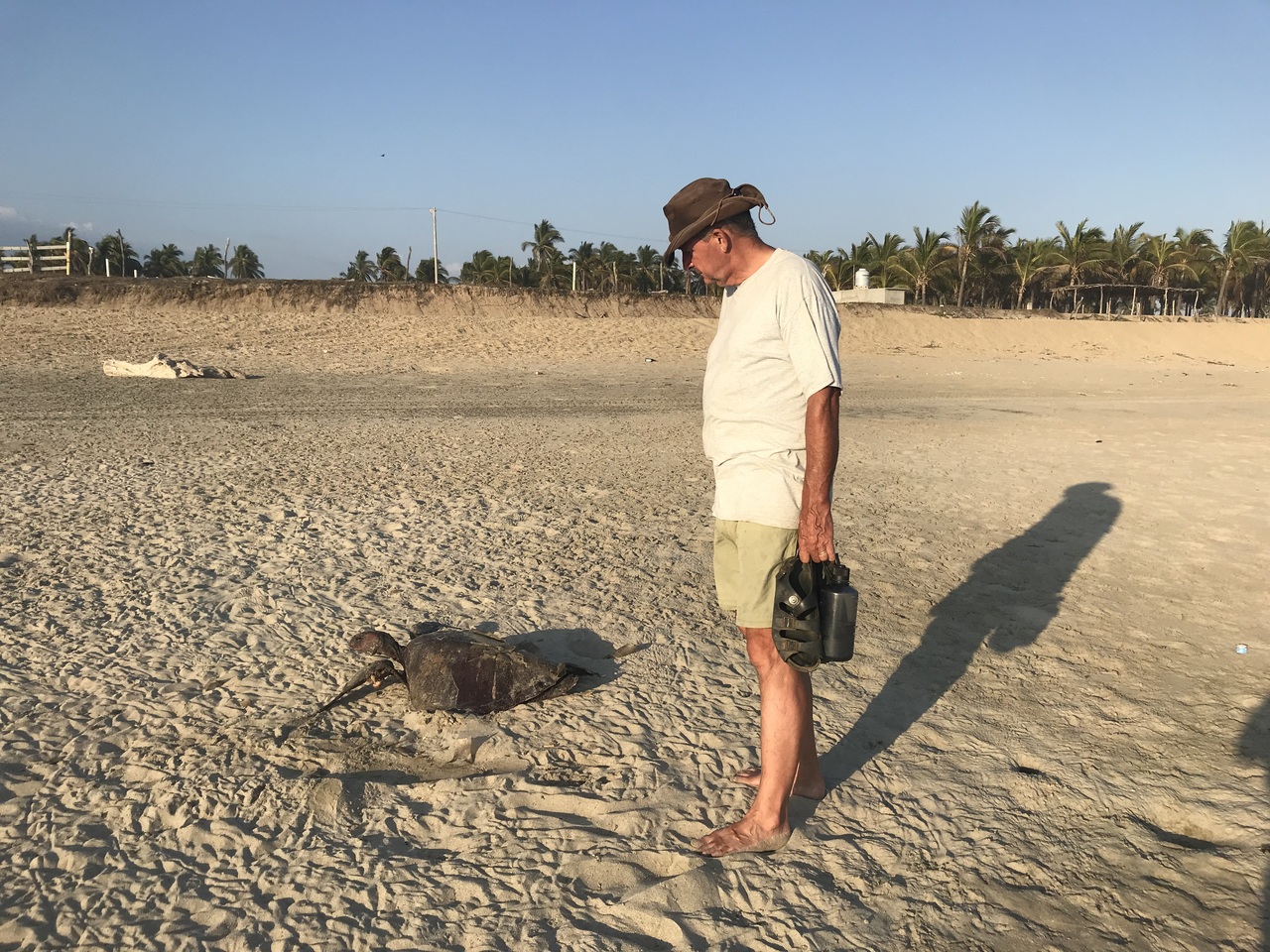
We leave the sea to look for butterflies, which are high up in mountains. Because Adriaan was so eager to "go to the butterflies," he also wrote a piece:
Monarch butterflies are not only beautiful to look at but they migrate thousands of miles (and that appeals to us) from the Eastern Rocky Mountains in North America to the Mexican state of Michoacan (northwest of the capital), where they spend the winter. The butterfly takes three generations there: the entire colony dies along the way but the offspring travel on during their two- to five-week adult lives. In Mexico (during the winter), reproduction slows down until they leave in the month of March. It is a mystery how an insect born "on the road" knows where to fly to, but it succeeds.
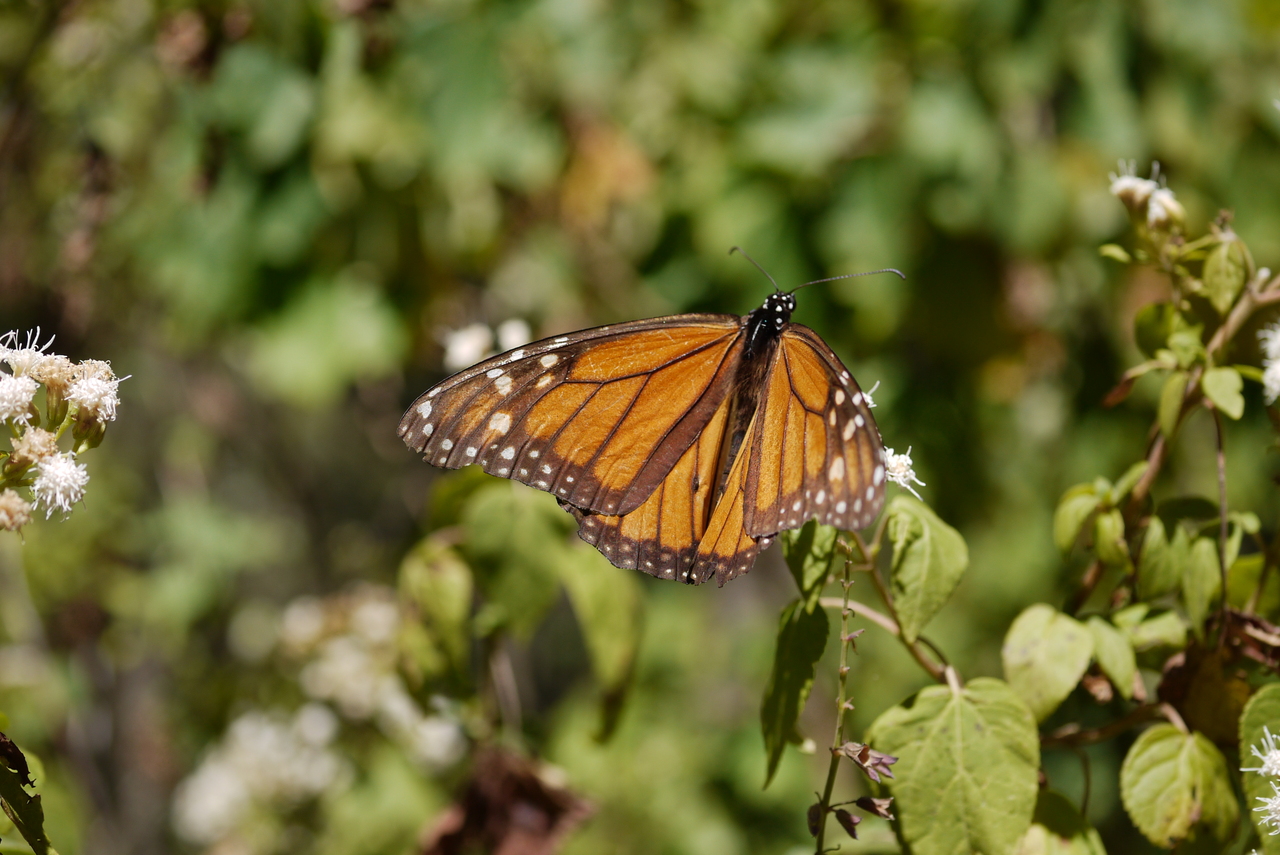
The species depends mainly on one plant family: the silk plant. (In Europe, that's an invasive species, by the way). That plant depends on the butterfly to fertilize its flowers. The silk plant is inedible to many other animals, but the caterpillars and the butterfly store the plant poisons in their bodies so birds will leave them alone.
The reserves (there are several) are home to huge colonies, some with billions of butterflies. But they are on their way to becoming an endangered species. Only 10% of the eggs hatch, many of the caterpillars are eaten, and after metamorphosis and during migration, dangers loom. In northern Mexico, we have seen road signs requiring motorists to drive slower during the migration. Despite this, millions are being driven to death.
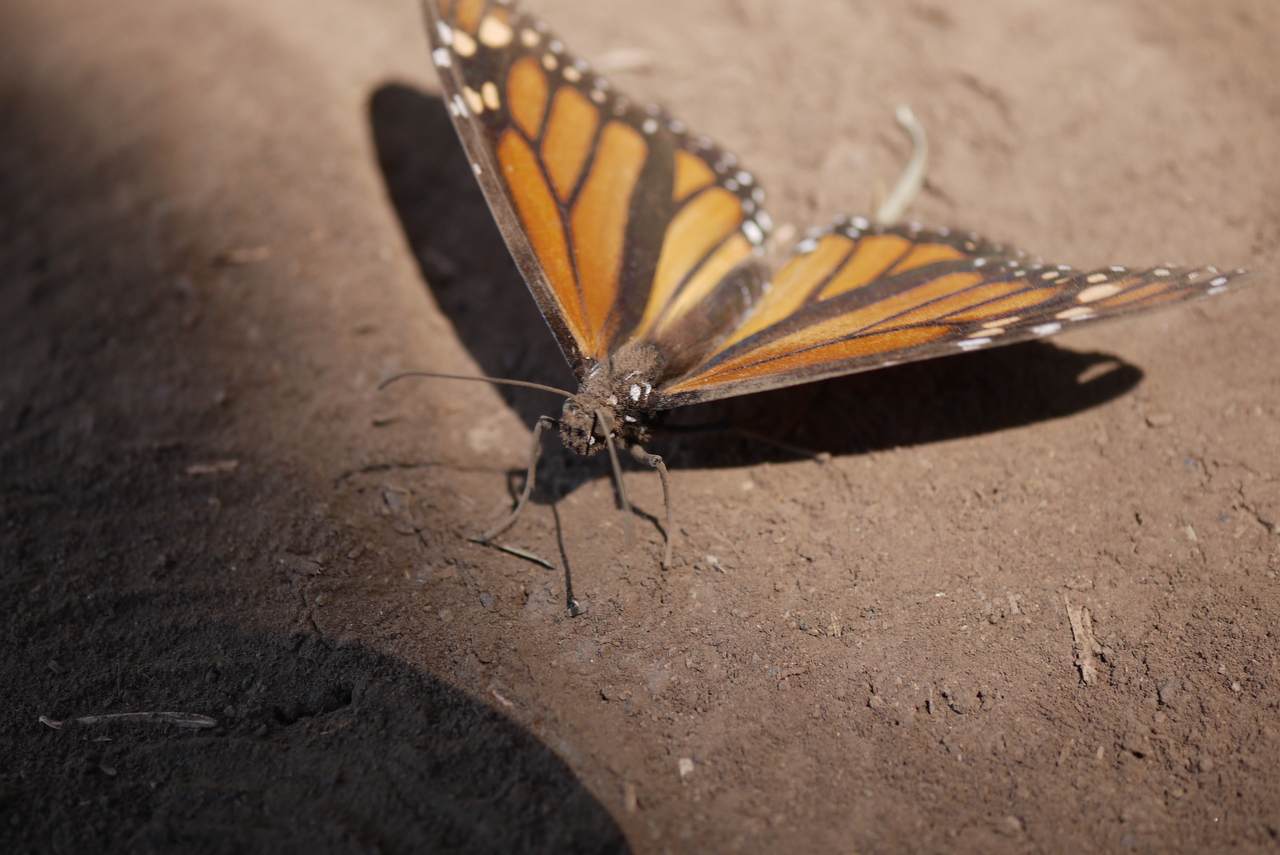
But the biggest problem is that silk plant: it tends to proliferate. Humans prefer not to have silk plants on pasture for cows (they don't like it) and so homo sapiens grabs a pot of plant poison. Fortunately for the Monarch butterflies of the eastern Rocky Mountains, there is relatively little livestock grazing along their route. But those from the east coast of the U.S. are less fortunate.
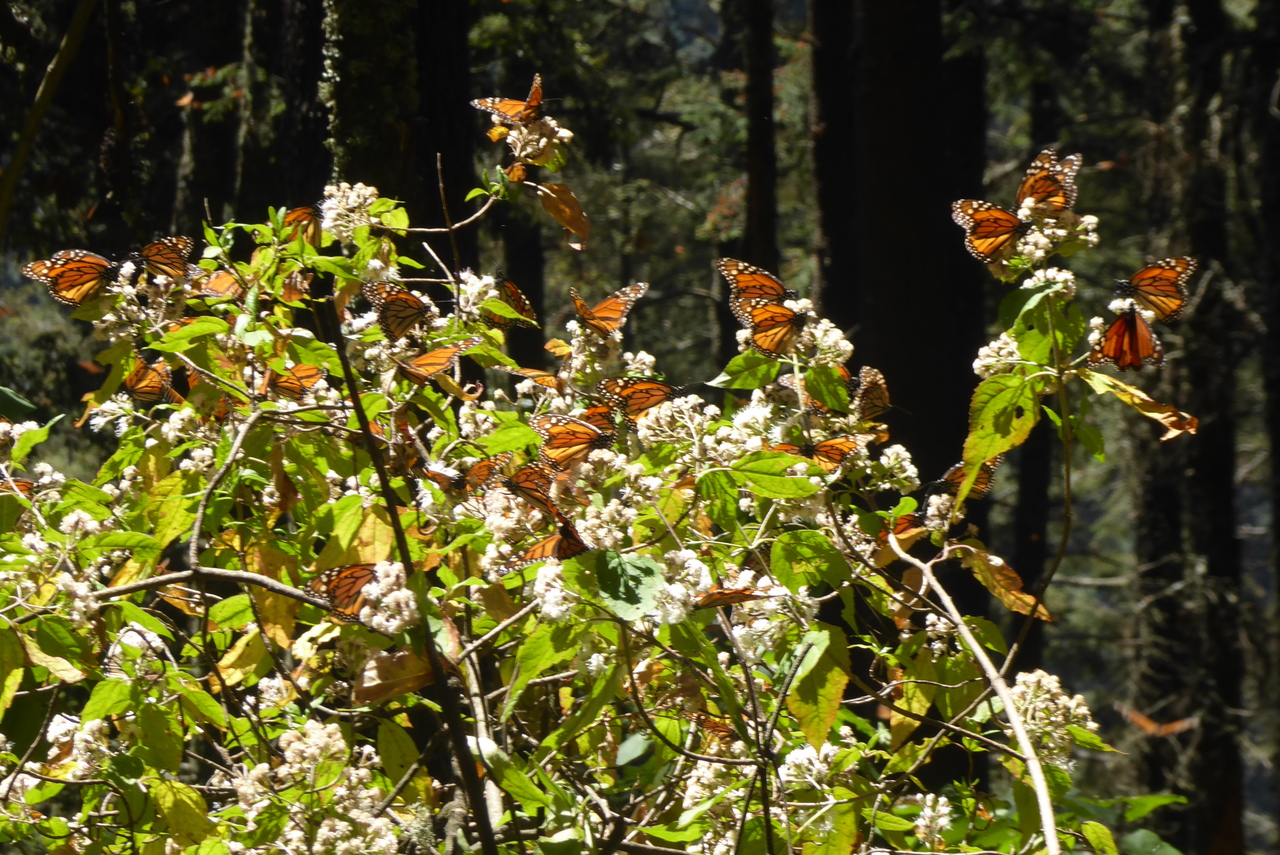
We choose a reserve that is somewhat less crowded (by people). We spend the night a few kilometers before the reserve, on a meadow in the mountains (3200 meters altitude). After a chilly night (the condensation in the tent was frozen) we walk to the colony and are impressed by so many butterflies. We watch them flying around, drinking from a stream, resting on pine trees, feeding on the flowers of silk plants and ... reproducing. Once again, we feel respectfully void among so many beautiful traveler insects.
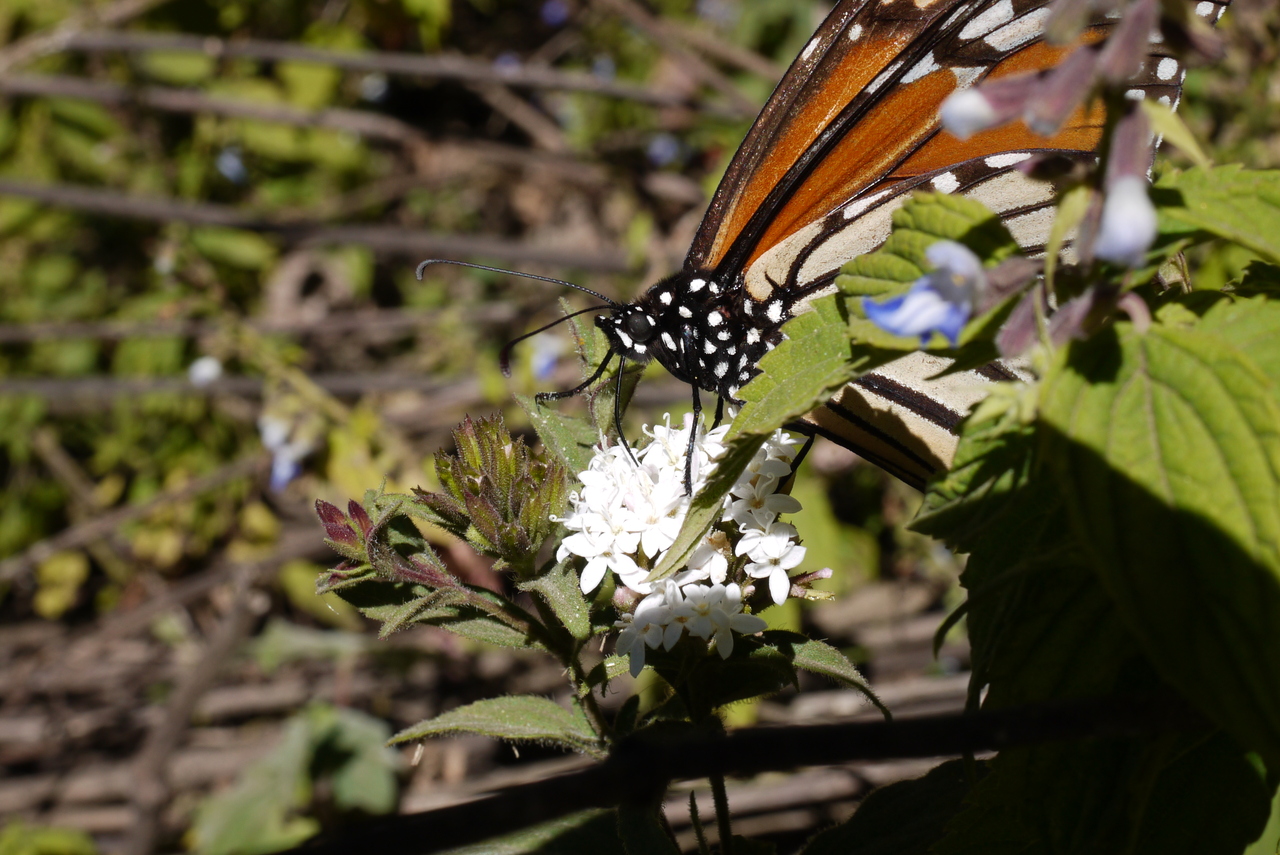
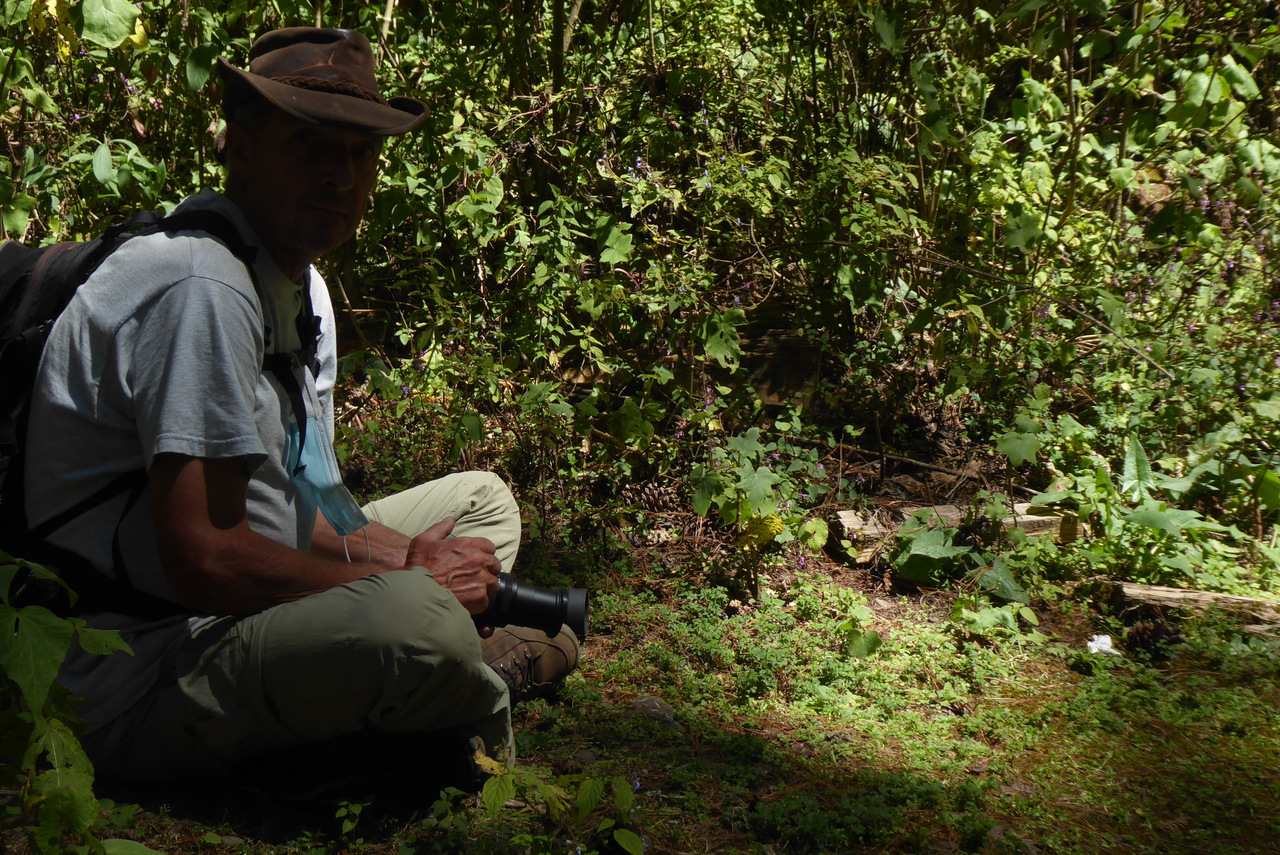
Once back at the car, enjoying the tropical sun in this cool climate, we made a meal. This always results in some waste (leftovers from the salad and cucumber, potato peelings and such) and when a shepherd and his flock came by, they turned out to be grateful 'waste processors'. But they got so excited that the flock ended up knocking over our table, with the petrol burner on it, with a pan of our perfectly fried potatoes. One (poor) sheep gets caught in the legs of the table in the melée, but manages to free itself later. Our little table is bent now and we have eaten less...
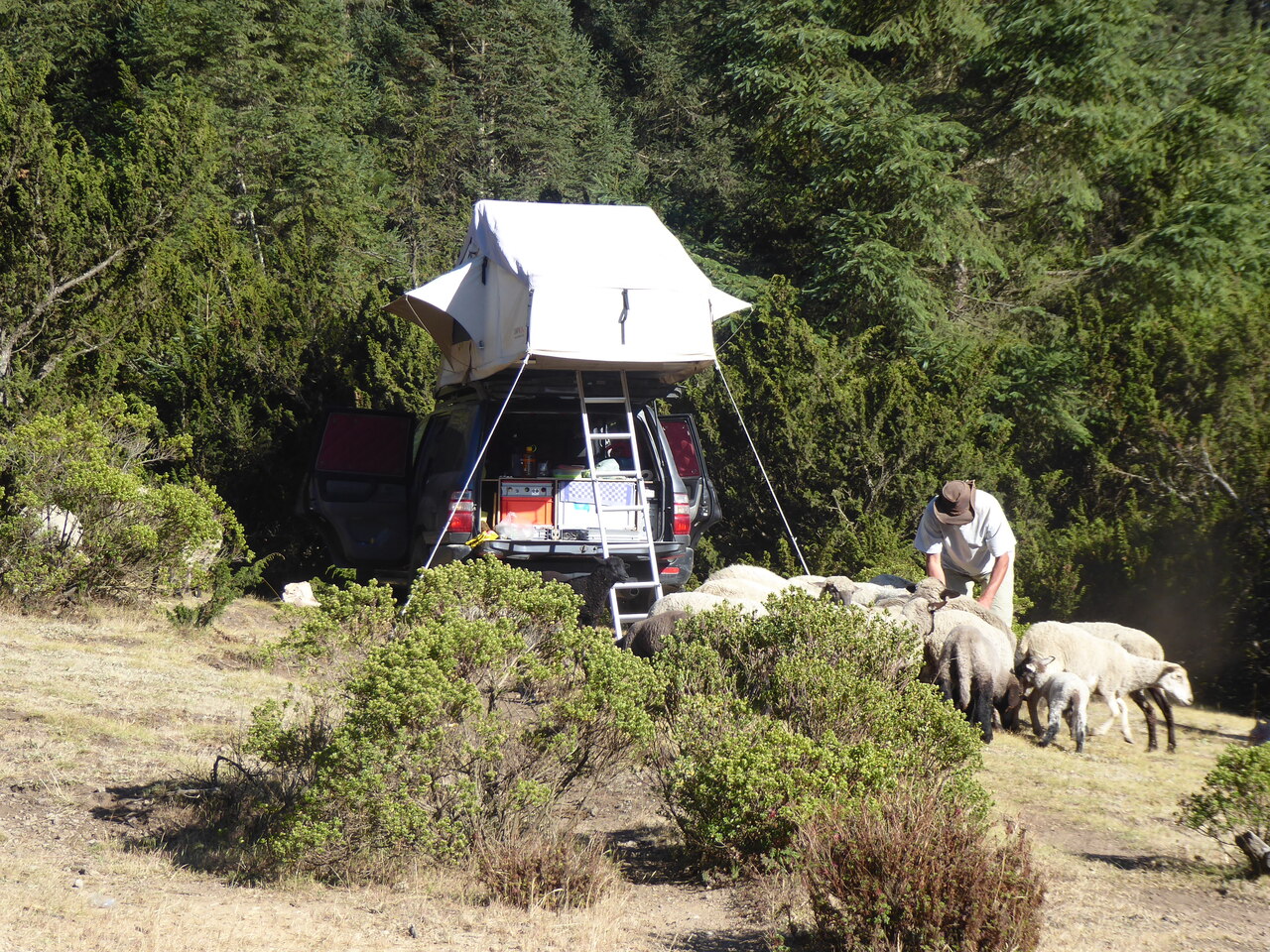
Through the town of Morelia, where I find a hairdresser, we drive to Lake Chapala. A day trip of over 300 kilometers is a lot for one day (here in Mexico) but on the other hand we realize that we need to make some progress if we want to reach Los Angeles in April. When we make plans in the morning to possibly leave and plot a further route north we get talking to an American neighbor and end up staying here because we fear not reaching our next "address" in time. And there is always something to do: The clothes we take to the various laundries during the trip don't come back really clean. Adriaan now has the habit of washing himself, and he uses the tap water on this campsite.
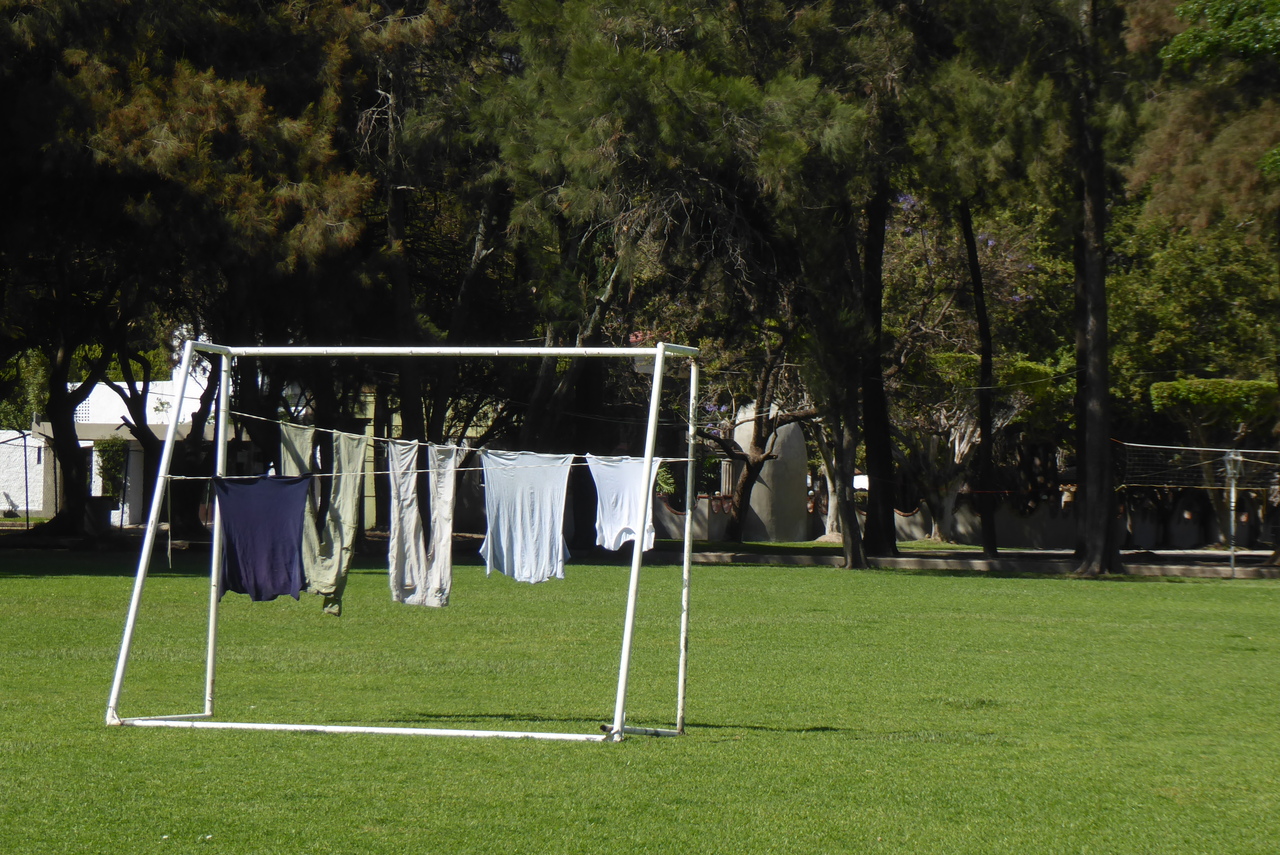
Our next sleeping place is the crater of the extinct volcano Ceboruco (of 2165 meters high). A magical place: ten stray, shy horses, squirrels and no other people for miles around. We decide to stay two nights. There are few places in the world where I feel so connected to nature. I could live in the wilderness for a while, I think.
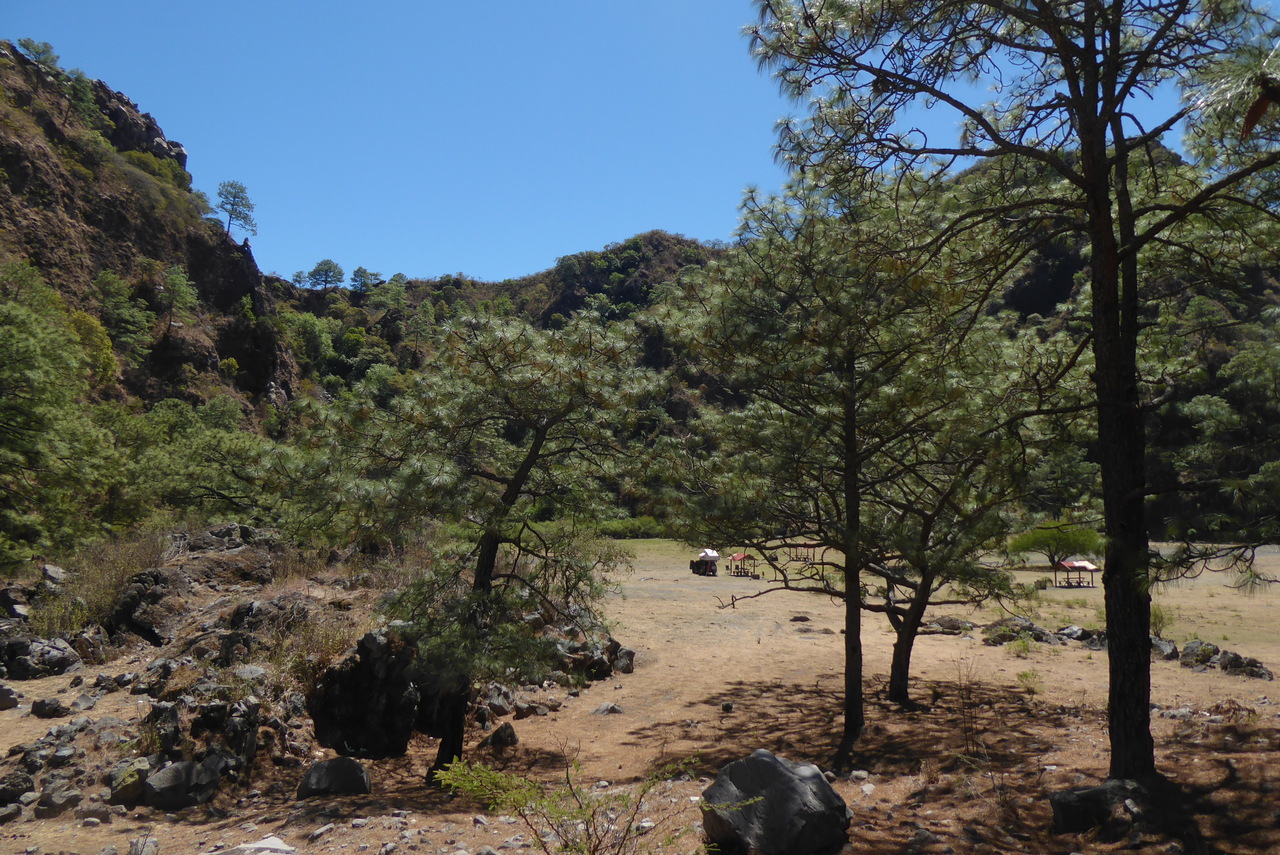
Nevertheless, we are gradually heading north. I feel a little stress: somewhere in April we have to plan a flight to Belgium for Laurens' wedding. It sounds spoiled, but we 'are obliged to do something' and we are not used to that anymore.